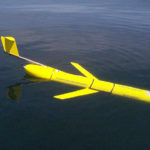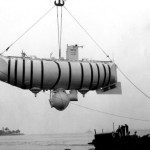 Congratulations to the US Navy for skeet shooting a satellite from ships at sea. You have to admit, its an impressive feat. But will it become a trend? One candidate isn’t even off the ground yet.
Congratulations to the US Navy for skeet shooting a satellite from ships at sea. You have to admit, its an impressive feat. But will it become a trend? One candidate isn’t even off the ground yet.
Satellites used to fly instruments designed to do one thing, like measure ocean color for instance, but nowadays instruments are multi-tasking like the rest of us. In the scientific space race, this means some instruments suffer the cost of others. Space veterans tell me we’re sending the technical equivalent of a Swiss Army knife into space rather than a simply designed, nicely weighted piece of fine cutlery.
Science magazine has an article this week on the Visible Infrared Imaging Radiometer Suite (VIIRs) instrument set to launch in 2009 as part of the National Polar-orbiting Operational Environmental Satellite System Preparatory Project (NPP). VIIRs is designed to measure 21 different parameters including ice cover, cloud cover, and forest cover. One thing it will not measure accurately is ocean color, because one of the filters responsible for the job is faulty.
Ocean color data is important for measuring primary productivity and sedimentation, among other things. An example is shown above in a false color scene from Tasmanian waters. Red colors (like those of the big eddy swirling in the upper right corner) indicate high levels of chlorophyll and phytoplankton. Researchers are concerned that if the problem is not fixed, a data gap will emerge in the time series of ocean color data. Space.com has a write-up on the technical aspects of the problem here.
VIIRs would be a fourth generation color sensor. The Coastal Zone Color Scanner (CZCS) was launched in 1978 aboard Nimbus 7 as a proof of concept for ocean color sensing, and was considered a cornerstone for our understanding of the ocean’s role in the global carbon cycle. It was only designed to last 1 year, but it remained operational for 8 years. CZCS was followed by SeaWIFs instrument in 1997 and then by MODIS/Aqua in 2002. MODIS/Aqua was designed to last 5 years, apparently, so its nearing the end of its operational lifetime now. If you’re interested to learn more there’s a NASA site describing the past, present, and future instruments here.






I don’t subscribe. I was trying to get the information from Science online but couldn’t find it. Is the “filter” actually a filter wheel, so its failure means more than one channel would not be measured? If there are “about a dozen” visible channels, it seems the loss of one would not necessarily cause that much of a problem. Or are you using “color” to mean channel ratios in IR channels? Visible channels? Is a critical ratio missing? Or am I missing something else entirely?
from the Science article …”scientists learned that there was a problem with the filter on one of NPP’s instruments, VIIRS, which will prevent it from accurately measuring ocean color”
so the problem is perhaps not the measure of the spectra but the accuracy the results